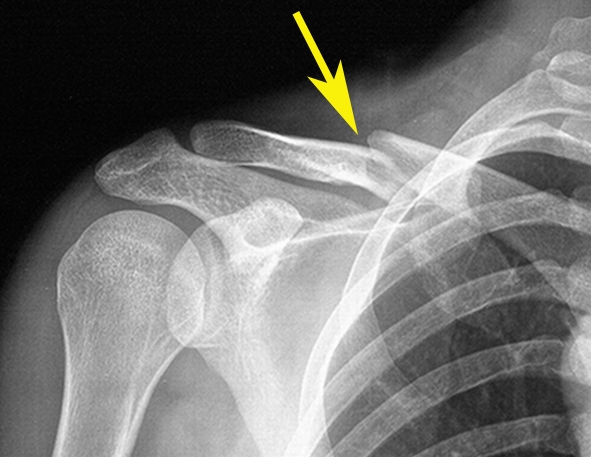Fractures of the collarbone (medical name: clavicle) are extremely common among cyclists. When cycling accidents occur, falling riders naturally use their hands and arms to cushion their impact. The force of that impact is transferred from the arm, through the shoulder, to the relatively fragile collarbone.
Many professional riders have experienced a clavicle fracture during their careers. One such example is the multiple World Road Race champion Marianne Vos, who collided with a motorcyclist during a race in 2012. Despite the injury, she managed to complete the race (finishing in 2nd place), and a clean break of the collarbone was later confirmed with an x-ray examination. After a swift two-month recovery, she won gold at the 2012 Olympics. Read more about Vos’s crash and diagnosis here.
A broken collarbone can usually be detected easily by hand, but there are many different types of clavicle fracture and an x-ray examination is always needed to determine the exact nature of the break. Radiographers are the professionals who obtain the best possible image; and radiologists are the experts in reading x-rays, who can confirm whether the break is a single clean fracture, or a more complicated break that may require surgery.
X-ray is the best radiological method for detecting bone fractures and the positions of any fractured fragments. The arrow on the image below indicates a very clear clavicle fracture with dislocation of a large fractured fragment.

Note: image is an example – not that of the athlete named above.
For more information about clavicle fractures, click here. Or read an experienced cyclist’s perspective, here.
